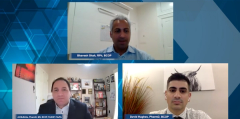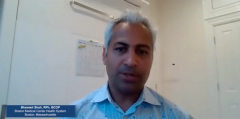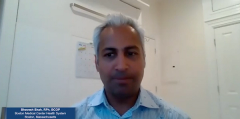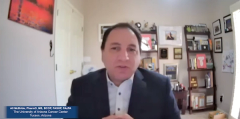
Unmet Needs in the Treatment of Immune Thrombocytopenia
Episodes in this series

Current gaps in data and challenges that impact the treatment of immune thrombocytopenia.
Bhavesh Shah, RPh, BCOP: Switching gears, I want to see what you both think are some of the unmet needs in ITP [immune thrombocytopenia].
David Hughes, PharmD, BCOP: One of the first things that comes to mind in ITP is you’re going to have patients that are ultimately going to take steroids; you can’t keep them on IVIg [intravenous immunoglobulin] every single week because of many different concerns. Then you’re left with only a couple of mechanisms—as we’ll talk about—of what’s available in the relapsed setting, which is the TPO [thrombopoietin] agonism. We’ll talk a little more about it in the coming segment. After stimulating platelets, you’re at a point where you’re running out of treatment lines in the relapsed setting. At some point, these patients may become refractory to all available options. There’s not a large armamentarium of drugs that we have at our disposal for ITP. We have targeting production or destruction by using steroids. After that, we’re at an unmet need where we need more therapies. We at least need to think about what to do after there is no other therapy to use as monotherapy.
Bhavesh Shah, RPh, BCOP: I’m curious: Are there any head-to-head clinical trials or any type of biomarkers we can use in ITP?
David Hughes, PharmD, BCOP: To date, there haven’t been robust, large head-to-head trials comparing a lot of these agents side-by-side. Much of that has to do with the rarity of the disease itself. In other diseases in oncology right now, you can target a specific mutation on a tumor. Ultimately, we don’t have that specific piece in ITP, where you can say, “I’m going to target this with a certain antibody.”
However, there are newer agents coming to the market where you can target, for instance, the Fc receptor via a monoclonal antibody mechanism. There’s some thought about using BTK [Bruton tyrosine kinase] inhibition for these drugs. Fostamatinib came to market in 2018, and it targets the SYK protein responsible for the internalization and phagocytosis of the platelet.
Bhavesh Shah, RPh, BCOP: There are definitely more agents than we had previously in ITP. How do you decide which agent to use for what patient? We’ll talk a little about guidelines, but are there guidelines that help you figure out which agent you should start with?
Ali McBride, PharmD, MS, BCOP, FASHP, FAzPA: Right now, we use dexamethasone-IVIg [intravenous immunoglobulin] in regard to the guidelines. You’ve seen the ASH [American Society of Hematology Clinical Practice] Guidelines and the International Consensus Report guidelines, which published about a year and a half ago. With COVID-19 [coronavirus disease 2019], it seems like 10 years ago, unfortunately. But from that standpoint, we’ve seen utilization of dexamethasone. We’ve seen utilization of IVIg. The problem is, as you alluded to earlier, Bhavesh, there are no real data on direct comparisons. We’ve had some internal data; for example, the rituximab data looking at 100 mg vs 375 mg, showing equivocal efficacy, which has moved dosing down to 100 mg as standard for rituximab in the ITP setting. But there really is no head-to-head comparison. We’re not having those head-to-head discussions. The guidelines provide what you can treat with up front or downstream. However, the appropriate information we’re lacking is the understanding of sequencing. If a patient comes in and fails rituximab, what do you go to next? You give them a TPO agonist. How long do they last? Then what’s next? From there, you move to a a SYK inhibitor, or maybe you move it up front, depending on the immune regulation from the SYK inhibition. At this point in time, as the numbers of therapies have grown, what hasn’t grown is the understanding of sequencing and also availability of new biomarkers to potentially understand what’s causing the inflammatory signal.
With some of the newer data on cytokine release coming from GVHD [graft-vs-host disease] and other areas—such as COVID-19, transplantation, and CAR [chimeric antigen receptor] T-cell therapy—we may have a better understanding of what’s being upregulated, so there may be other opportunities for cytokine regulation, as well as a change of sequencing, if we see those changes up front. At this point in time, there’s a true lack of understanding of sequence capabilities. If there are data coming out, that would add to the patient’s advantages but also potentiate the idea that some patients respond better to other therapies.
Newsletter
Stay informed on drug updates, treatment guidelines, and pharmacy practice trends—subscribe to Pharmacy Times for weekly clinical insights.




















































































































































































































